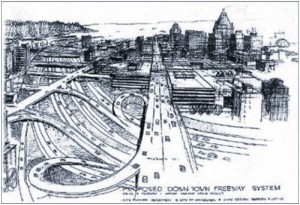#WhatsTheLink: Transit has shaped Metro Vancouver
#WhatsTheLink: Transit has shaped Metro Vancouver
Our hard working transit system gets the region’s 418,000 riders each day where they need to go. Aside from transit, TransLink also manages 2,300 lane kilometres of major roads, five bridges, and helps make 107,000 cycling trips in the region each day possible.
And we are back this week to share with you another #WhatsTheLink tidbit!
There’s a good chance where you spend your days is directly related to where transit and these infrastructures are located in Metro Vancouver. Transit has guided growth and community design in the region from the very beginning!
Miss 604: #WhatsTheLink: Transit Shapes Your Region and Helps to Make it More Livable

From the arrival of the railroad in the late 1800s, to the early street cars of the 1900s, and then the interurban lines that later connected New Westminster, Vancouver, Steveston, Karrisdale and Chilliwack, transit has helped fuel the growth of communities.
The region’s growth strategy was updated in the 1970s and it brought a prohibition on the expansion of highways into the city of Vancouver. Transit was seen as way to facilitate the growth of the region.
This set the stage for the birth of the SkyTrain system in the 1980s. The SkyTrain system today includes the Expo, Millennium and Canada Line, connecting Vancouver, Burnaby, Richmond and Surrey. The planned the Evergreen Line expands the SkyTrain system into Port Moody and Coquitlam.
Vancity Buzz: #WhatsTheLink: How Transit Has Shaped Metro Vancouver
The SkyTrain system, from the outset, has been shaping Metro Vancouver development and is helping to determine where we build in Metro Vancouver.
Statements like, “Anything transit-oriented—anything close to a station—is going to be a highly coveted opportunity” and “…The consumer has spoken. They want to live on transit, and they’ll buy without parking” are showing developers as well as buyers and renters see proximity to transit as valuable.
These transit-oriented communities—or transit-oriented developments (TODs)—focus on making transit accessible to everyone.
They promote more walking and cycling than communities without good access to transit, resulting in lower levels of automobile use and greenhouse gas emissions.
By 2018, we anticipate there to be over 70 integrated, transit-oriented developments around SkyTrain stations!
Among them, new communities are sprouting up around Brentwood Town Centre, Oakridge-41st Avenue and Marine Drive Stations.
Author: Allen Tung





